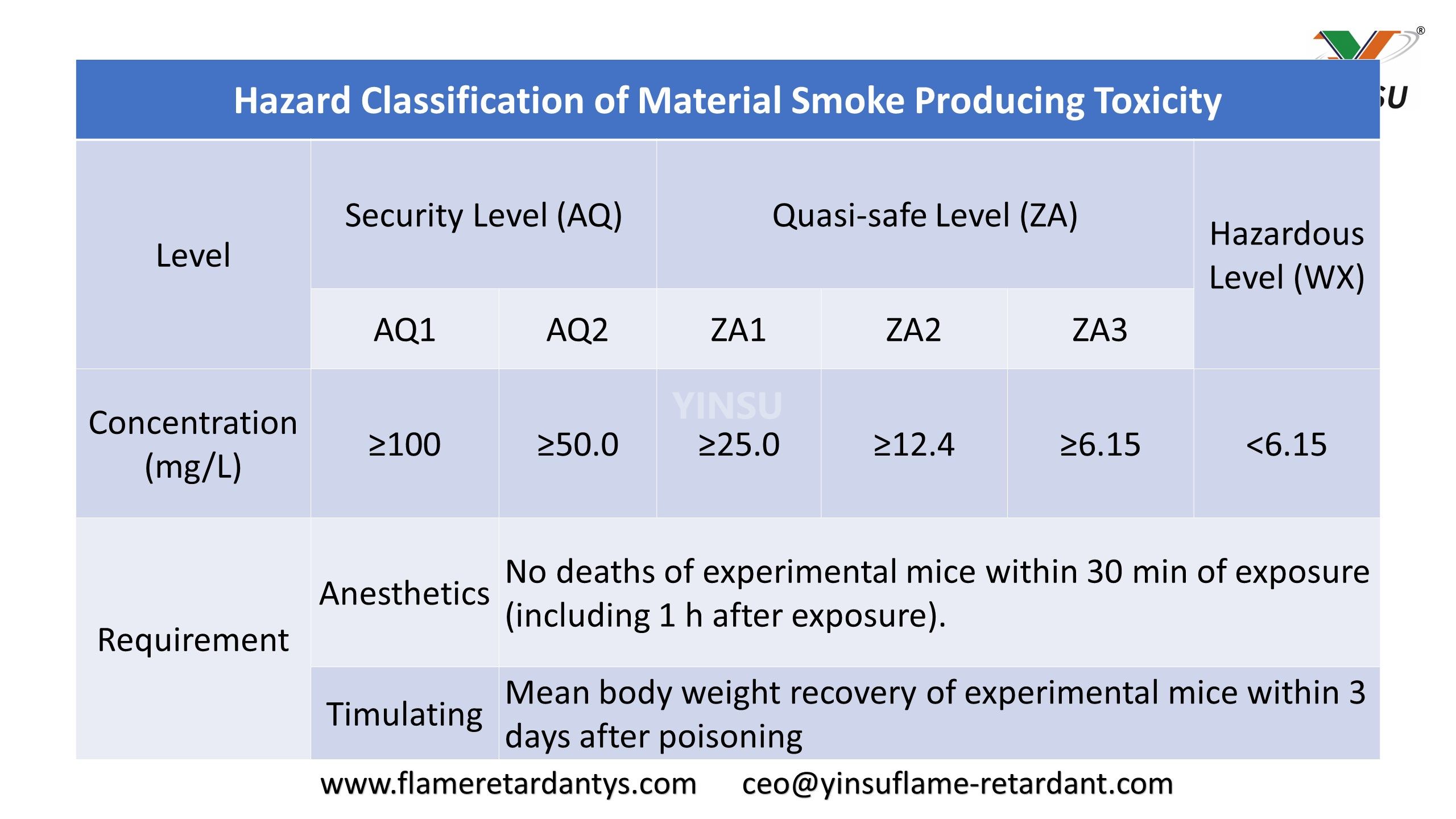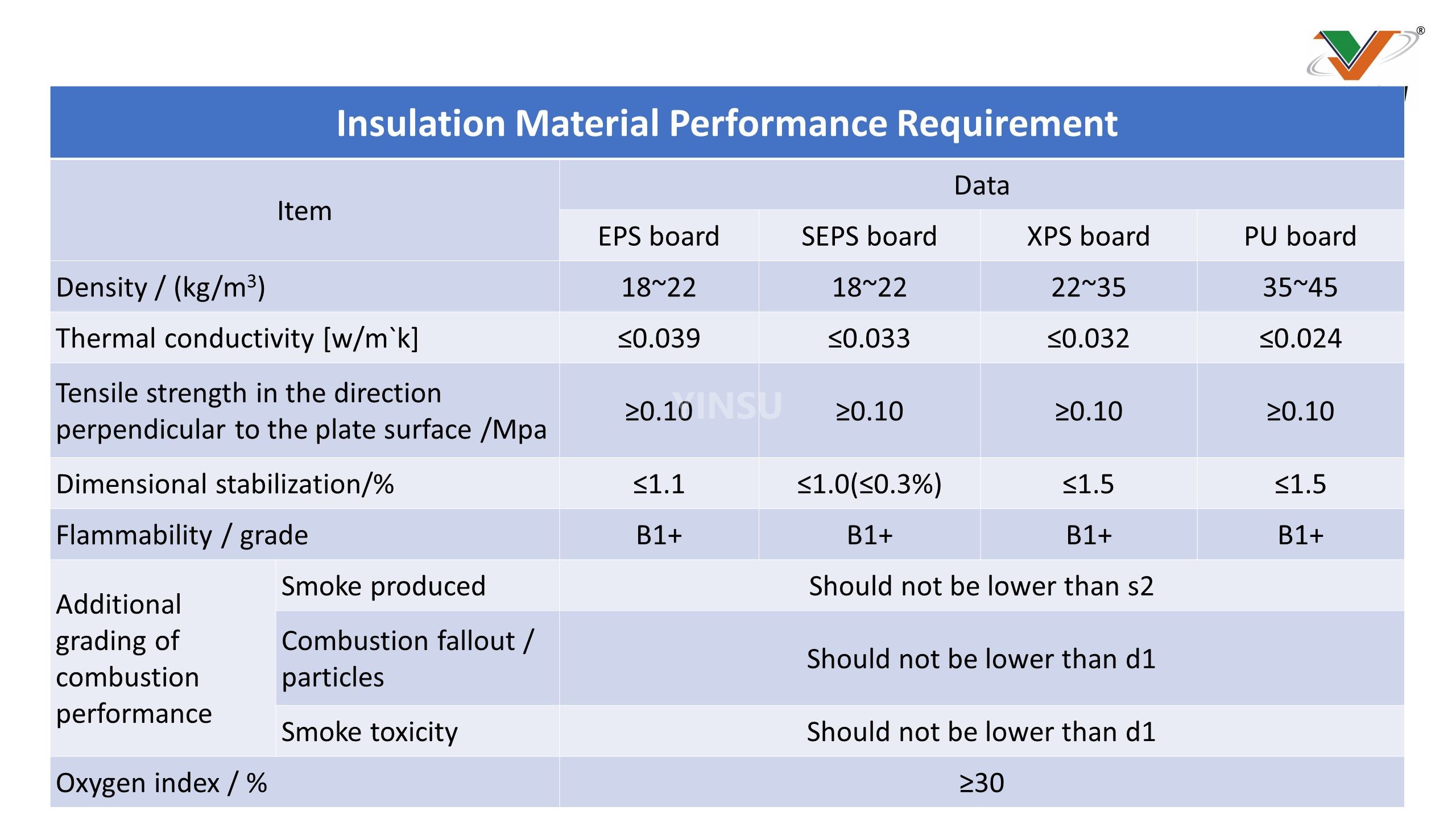- All
- Product Name
- Product Keyword
- Product Model
- Product Summary
- Product Description
- Multi Field Search
Views: 51 Author: Yinsu Flame Retardant Publish Time: 2024-04-20 Origin: www.flameretardantys.com








Understanding The Combustion Performance Index in The Test Report of Thermal Insulation Materials
A thermal insulation material test report, read this article will be able to read inside the combustion performance indicators.
I. Combustion performance
Combustion performance refers to all the physical and chemical changes that occur when building materials burn or encounter fire, this performance is measured by the material surface ignition and flame propagation, heat, smoke, carbonization, weight loss, as well as toxicity and other characteristics of the product.

II. B1-level, B2-level insulation materials can be lit, but what is the difference?
In the site site, after a number of insulation board to understand the combustion performance, often from the inside of the pants pockets to pull out a lighter, and then held up a thermal insulation board point, but it is worth noting that the organic insulation materials, although divided into B1 and B2 level, but encountered an open flame are able to light, the scientific judgment of the combustion performance needs to be sent to the test. Relying only on the lighter ignition test, it is still difficult to determine the obvious difference between B1 level flame retardant and B2 level combustible, but it can be seen that flame retardant B1 level after leaving the fire than the combustible B2 level board flame length is short, short combustion time, less smoke and other characteristics.
III. The oxygen index
Oxygen index is one of the important indicators of combustion performance of organic thermal insulation materials. In the specified conditions, the material in the oxygen and nitrogen mixed gas flow for flaming combustion of the minimum oxygen concentration required. Oxygen occupied by the volume percentage of the numerical value to indicate. A high oxygen index indicates that the material does not burn easily, while a low oxygen index indicates that the material burns easily. In the specified test conditions at room temperature in the material in the O2, N2 gas mixture just to maintain the minimum oxygen concentration of flaming combustion expressed as a percentage of the volume. The higher the oxygen index, the better the flame retardancy.

IV. Can self-extinguishing from fire be taken as the standard of flame retardant?
According to the oxygen index index, B1 grade oxygen index OI≥30%; B2 grade oxygen index value OI≥26%. Is the laboratory state according to the national standard requirements of the XPS extruded plastic board test results, there are agreed upon strict test conditions, can not be simply understood as self-extinguishing from the fire.
On site, many people think that the open flame ignited upright (non-tilted) XPS insulation board of the facade (non-angled), to see whether to leave the fire source of their own extinguishing method, there can be drawn on, but not scientifically rigorous.
Fifth, SBI single combustion test related content
GB20284-2006 "building materials or products of the single combustion test" related regulations
SBI single combustion test (GB/T 20284-2006 building materials or products of single combustion test)
Combustion growth rate index: FIGRA refers to the sample heat release rate and the ratio of the fire time, characterizing the rate of fire growth, the larger the FIGRA index shows that the faster the growth of combustion, the higher the fire danger.
FIGRA0.2MJ, w / s combustion growth rate index: THR critical value (specimen subjected to fire in the total heat release from the burner) critical value of 0.2MJ (megajoule) after the specimen heat release rate and the ratio of the fire time of the maximum value.
Lateral flame spread (LFS): the lateral spread of the flame on the long wing of the specimen.
THR600 specimen subjected to fire in the main burner within the first 600S of the total heat release
Flammability regulations
Ignition time 30s
Flame tip height within 60s FS ≤150mm
Within 60s, there is no burning droplets igniting the filter paper phenomenon.
Flame tip height within 60s FS ≤150mm
No burning droplets igniting the filter paper within 60s.
Note:GB/T 20284 《Burning Test of Building Materials or Products in a Single Unit》.
GB/T 11785 "Determination of combustion performance of flooring materials Radiant heat source method".
Smoke growth rate index (smoke growth rate index): SMOGRA sample combustion smoke generation rate and its corresponding time ratio of the maximum value.
Smoke growth rate index B1 grade extruded plastic board inspection report index ≤180m2/S2
Combustion droplets / particles (flaming droplets / particles): in the combustion test process, from the sample on the separation of substances or particles.
GBT20285-2006 material smoke toxicity hazard classification smoke toxicity
Smoke toxicity (smoke toxicity): the degree of damage/injury caused by toxic and hazardous substances in smoke.
Classification of levels:
Material smoke toxicity hazard is divided into 3 levels: safety level (AQ level), quasi-safety level (ZA level) and hazardous level (WX level); of which the AQ level is divided into AQ1 level and AQ2 level, ZA level is divided into ZA1, ZA2, ZA3 level.
Material smoke toxicity hazard classification

Requirements for exterior wall insulation materials

Application and Development Trend of Flame Retardants in Building Materials
What Are The Standards For The Fire Resistance Rating Test Of Building Materials?
Research Progress In Fire Retardancy Of Building Foam Materials
Understanding The Combustion Performance Index in The Test Report of Thermal Insulation Materials